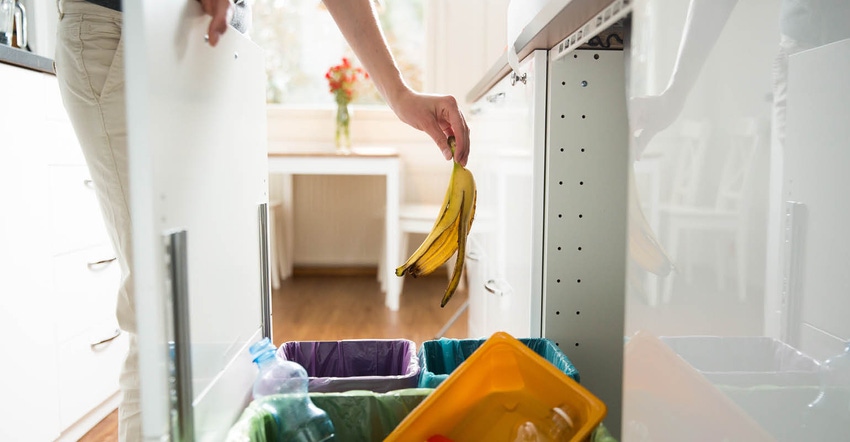Waste or resource—a story of yogurt.
November 20, 2017

This is Part One of a two-part series. For Part Two, go here.
You open your fridge, looking for a tasty snack, and instead you come face to face with an old container of yogurt. You know this particular container of yogurt is well past its prime so you toss the whole thing, plastic and all, into the garbage bin. I think we’ve all been there—if not with yogurt then with something else, maybe an apple core we pitch into a near-by garbage can for convenience, or a broken cell phone from 2003 because we have no idea where to take it to be recycled. That yogurt container, apple core and cell phone will end up on the curb with the rest of the garbage and taken to one of a few thousand landfill sites across the U.S. and Canada1. There, the container will sit, buried in the ground, for hundreds of years. Let’s call that option one.
What is option two? Well, what if we stopped viewing these products as ‘waste’ and started to consider them as valuable resources? Imagine instead if we took a moment to dump the old yogurt into our organics bin, quickly rinse the container, and then put that into the recycling box. It would probably take less than two minutes.
Now the yogurt will head to a composting facility where it will be converted into nutrient rich compost that can be spread on agricultural land and used to grow more food. The container will head to a recycling facility where it can be processed and eventually converted into plastic pellets that can be used to make new packaging products. This is the idea of circular economies—where waste materials become valuable resources.
In North America, option one still dominates, so our products (and waste) tend to follow a linear flow: they start as raw material, are processed, used or consumed and finally the majority of our waste ends up in landfills 2. For many residents, garbage bins and bags are dragged to the curb each week where a truck comes and hauls the waste away while little thought is given to what happens after the truck drives down the road. But with more attention, we could shift instead toward option two, which diverts waste away from landfills, to other, more sustainable options, such as recycling and composting facilities, which can help convert this linear flow into a more circular one.
Why do we care, and why do we want a circular flow? A more circular flow is appealing because in this pattern, it is possible for waste products to become valuable resources—wouldn’t it be nice to gain something from our waste instead of simply seeing it as a burden? This approach is especially important in the case where the products found in waste come from non-renewable resources, for example nutrients (e.g. phosphorus) found in organic waste and rare earth elements (e.g. dysprosium) found in electronic waste.
Over the past three decades, recovery and recycling of paper, plastic, metals, glass and even electronics has gained significant traction across North America. But recovery and recycling of organic waste, like food scraps, remains limited. Considering organic waste makes up about 40 percent of our municipal solid waste stream in Canada and the U.S., neglecting this component of the waste stream severely limits our ability to move toward the desired circular pattern in our systems. As programs and policies around zero waste and circular economies are starting to gain momentum, more attention will have to be given to the organic fraction of our waste stream if we truly wish to achieve the goals outlined in these programs.
References:
U.S. Environmental Protection Agency. Inventory of U .S. Greenhouse Gas Emissions and Sinks: 1990-2014. (2016). at
Metson, G. S. & Bennett, E. M. Facilitators & barriers to organic waste and phosphorus re-use in Montreal. Elem. Sci. Anthr. 3, 70 (2015).
About the Author(s)
You May Also Like


